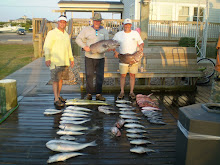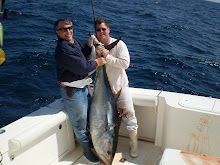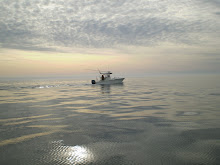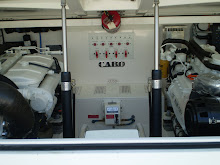
By Jim Field
A new book on giant waves is stocked and waiting on the shelf of a bookstore near you. It reports on the phenomenon of giant waves, aggregating stories and information about their existence--as it turns out, the little hard information that exists on these monsters, despite common knowledge among seamen of their power and peril. Notably, the book offers data showing that wave heights are increasing over time--a stunning 25% from 1960 to 1990--with many scientists expecting this trend to continue in the future given global warming and its impact on sea and weather patterns.
What does this mean for us--the weekend sportfishermen? Well, maybe that we should really enjoy and, indeed, even savor (like a good wine), those infrequent days when the sea is calm and there's little current--particularly when we're hoping, and actually able, to bottom fish. Seems like we're headed for fewer of these special days ahead.
Here's a passage from the book review that appeared in the NYTimes this past Sunday.
THE WAVE
In Pursuit of the Rogues, Freaks, and Giants of the Ocean
By Susan Casey
Illustrated. 326 pp. Doubleday
She [author Casey] pushes the scientists on the big question: Will global warming lead to stormier oceans and bigger waves? With varying degrees of hesitation — because the data is not in to confirm a long-term trend, not because they are global - warming deniers — the answer is a resounding yes. (Though, as one attendee pointed out, “you’re not going to be able to prove it until it’s too late.”)
Scientists do know, however, that average wave heights rose by more than 25 percent between the 1960s and the 1990s, and insurance records document a 10 percent surge in maritime disasters in recent years. From 1990 to 1998 alone 126 vessels were lost, along with more than 600 lives.
The future most likely portends meaner hurricanes, freakier waves, higher ocean levels and dramatic geologic events that will create devastating tsunamis. Given that 60 percent of the world’s population lives within 30 miles of a coastline, wave science is suddenly vital science, and the experts are keenly aware that there are levees, oil rigs, shorelines, ships and millions of lives at stake.










No comments:
Post a Comment